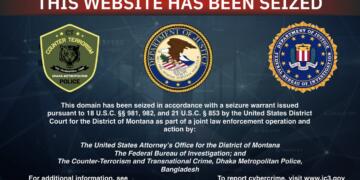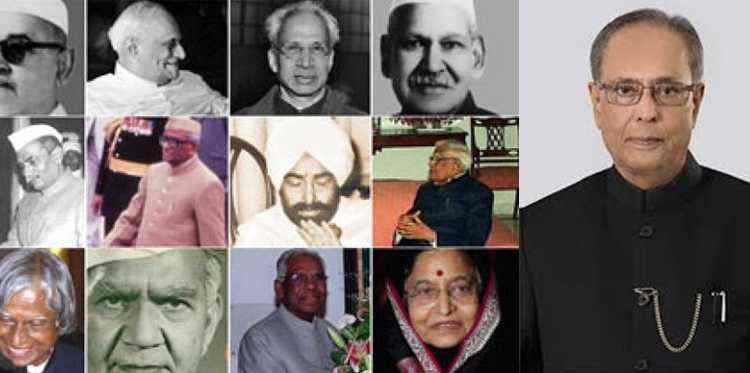Congress has expressed shock over the decision to bring Uttarakhand under President’s rule. There has been the usual outcry of ‘Murder of Democracy’, ‘Modi is a Fascist Dictator’ etc. Before expressing agreement/disagreement with Congress’s reaction, one must understand the facts. India is not a true federal nation in the sense that Central Government enjoys more powers than the State Governments. Additionally, there is a Constitutional provision in the form of Article 356 that permits imposition of President’s rule in the event the State Government is unable to discharge its duties as per the Constitution. Between 1951 till date, there have been nearly 126 instances of President’s rule being imposed. Congress has directly presided over imposition of President’s rule in 88 of 126 instances. Indira Gandhi, in her 15 year reign as the Prime Minister of the nation, deployed President’s rule no less than 50 times. That having been said, there have been enough and more examples of the intent of Article 356 being flouted to serve petty political goals. This led to the Sarkaria commission that recommended imposition of President’s rule sparingly, only as a last resort and the well-known judgement by the Supreme Court in the S.R Bommai Vs the Union of India case that laid down clear guidelines for bringing a state under President’s rule. Ever since, instances of President’s rule have come down drastically. But this was not the case in the 70s and 80s when State Governments belonging to the Opposition were frequently dismissed in flagrant violation of Constitution’s spirit.
- Kerala (1959)
The state of Kerala was created in 1956 with amalgamation of territories along the Malabar Coast. Elections in 1957 brought forth a Communist government under EMS Namboodiripad, a first for India. The Communists won nearly 60 seats in the 126 member assembly and formed the government with support from 5 independents. Congress stood at second position with 43 seats. As was anticipated, they began to implement a radical agenda that included reforms in education and agriculture. The Congress then shrewdly allied itself with interest groups belonging to Syrian Christians and Nairs and launched violent protests throughout the state. These protests, known as Vimochana Samaram, were supported by various religious and communal groups. The death of a pregnant fisherwoman at the hands of police further galvanized the protests. Under pressure from within the party and the protesters, Nehru dismissed the State Government and called for fresh elections. In the elections held in 1960, Congress led United Front came to power, but the Communists managed to better their vote share. In Communist mythology, the protests against their government are frequently attributed to the CIA-INC nexus that worked overtime to undermine the Communist government at the height of Cold War.
- Andhra Pradesh (1984)
Andhra Pradesh had been a Congress bastion ever since independence. However, elections held in Andhra Pradesh in 1983 returned Telugu Desam Party, which had been formed only a year ago, with a brute majority of 201 seats in a 294 member assembly. NT Ramarao, as TDP’s leader was sworn in as the Chief Minister. Indira Gandhi, then at the helm in Delhi, acted quickly to have NT Rama rao disposed of. Using the Governor, Ram Lal, ex-CM of Himachal Pradesh, a rebellion against NT Ramarao was set up. As NT Ramarao proceeded for a bypass in the US, the Governor, ostensibly acting on Indira’s directions, had Nadenla Bhaskar Rao, a Cabinet Minister in NTR’s government upstage him on 16th August. The Governor, acting according to the script, then proceeded to sack NTR’s government. NTR decided to take the battle to the lioness’s den. NTR met the President in New Delhi with his MLAs. The sight of a wheelchair bound NTR, with 161 of his MLAs raising their identity cards, shocked the nation. The Opposition and even the Media loudly denounced undemocratic dismissal of a legitimate State Government. In little over a month’s time, the Central government was forced to reinstate NTR as Andhra Pradesh’s Chief Minister. In elections held in 1985, TDP was voted back to power with 202 MLAs.
- Bihar (2005)
Elections held in February 2005 in Bihar had thrown up a hung assembly. The BJP-JD(U) combine had won 92 of the 243 assembly seats. Lalu Yadav’s RJD had emerged as the single largest party, winning 75 seats. Ram Vilas Paswan’s LJP, held 29 seats and was widely believed to be the kingmaker. The assembly had been kept under suspended animation ever since election results. For days, LJP had dithered on decision to support the UPA or the NDA. However, Ram Vilas Paswan increasingly seemed amenable to supporting the NDA under Nitish Kumar’s lead. In fact, he had his MLAs transported to BJP ruled Jharkhand to prevent desertions. It was at this critical juncture that Governor Buta Singh chose to act. Claiming that there was rampant horse trading, he recommended the dissolution of the State Assembly. The Union Cabinet, which had met to discuss the twin blasts in Delhi at that time, instead ended up recommending President’s rule. President APJ Abdul Kalam, who was then is Moscow was contacted and his approval obtained at 3 AM. The Supreme Court later came down heavily against Buta Singh’s actions. Instead of providing an opportunity to the largest alliance to form a government, Buta Singh had chosen to recommend dismissal of the assembly on grounds such as horse trading, without providing any proof.
- Multiple States (1977) & (1980)
In the momentous elections that followed Emergency, Janata Party formed the government under Morarji Desai’s Premiership. Immediately after taking office, Janata Government used its influence with the governors to put 9 State Assemblies that had Congress governments under President’s rule. These states were Uttar Pradesh, Bihar, Haryana, Orissa, Madhya Pradesh, Rajasthan, Himachal Pradesh, Punjab and Tamil Nadu.This decision was not based on breakdown of constitutional machinery or law and order issues. The decision was taken purely as a revenge for tactics that Indira Gandhi had followed in the years before. Incidentally,The Congress returned the compliment when it returned to power in 1980.
Similar cases have happened in almost all states of the Union. The dismissal of Janata Dal government under S R Bommai by the Governor resulted in an appeal which led to Supreme Court finally providing clear guidelines for the imposition of President’s rule by the Central Government. Article 356 is meant to be a tool to uphold the Constitution in an event where Constituional provisions are threatened. Sadly, many Central Governments have been allowed to make a mockery of a critical constitutional safeguard.
https://en.wikipedia.org/wiki/Kerala_Legislative_Assembly_election,_1957
http://revisitingindia.com/2012/11/22/kerala-crisis-1957-1959-first-litmus-test-of-indian-democracy/
https://en.wikipedia.org/wiki/Kerala_Legislative_Assembly_election,_1960
http://www.frontline.in/static/html/fl2212/stories/20050617004201700.htm
































